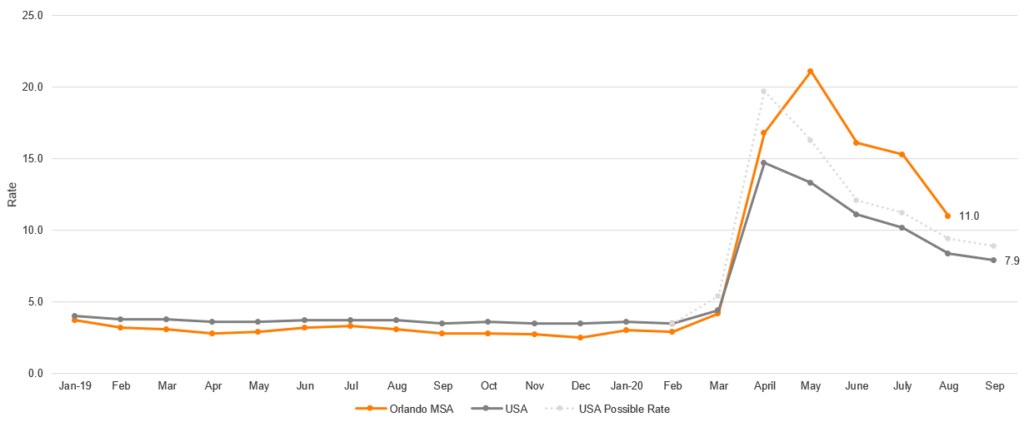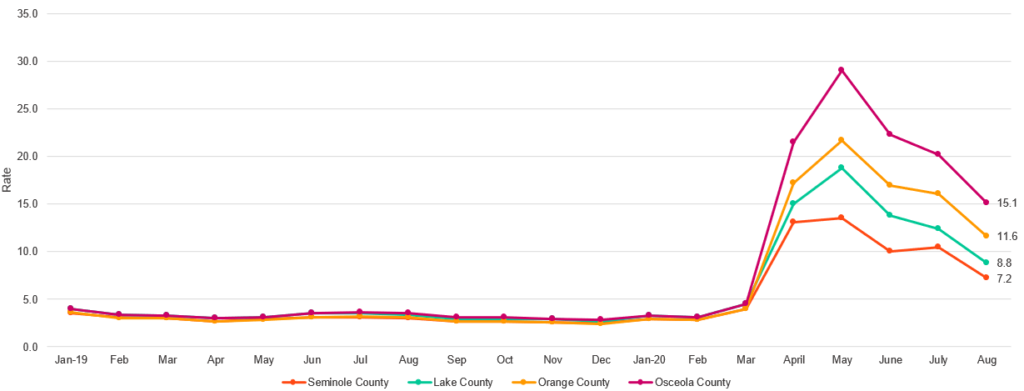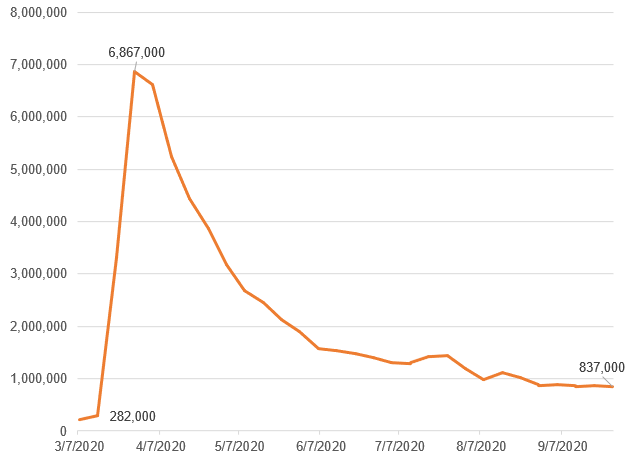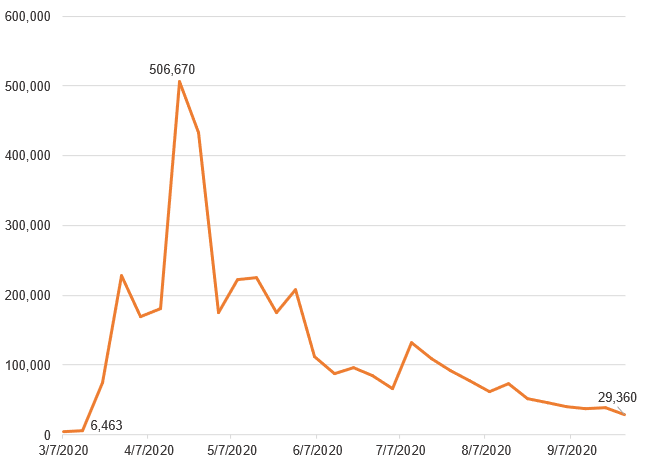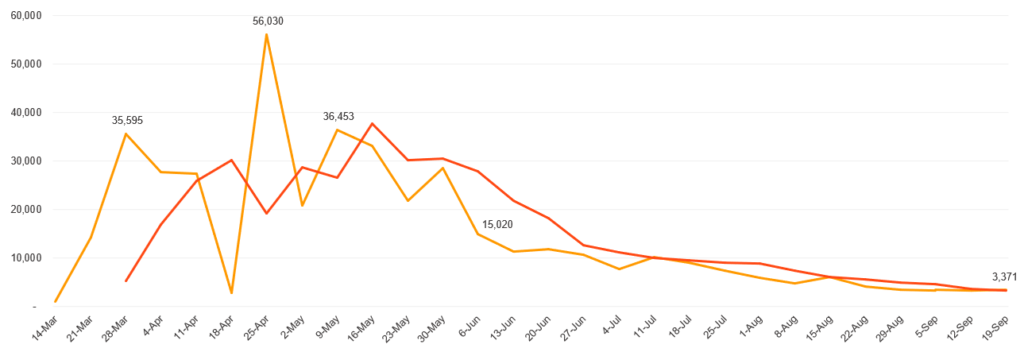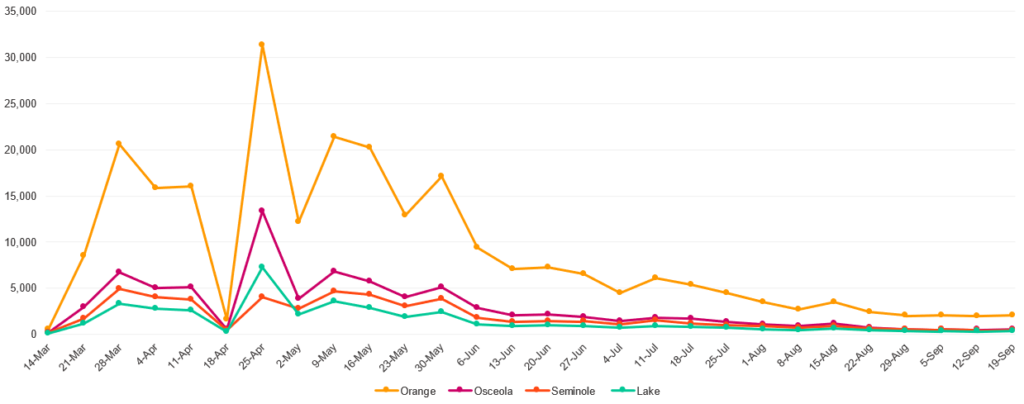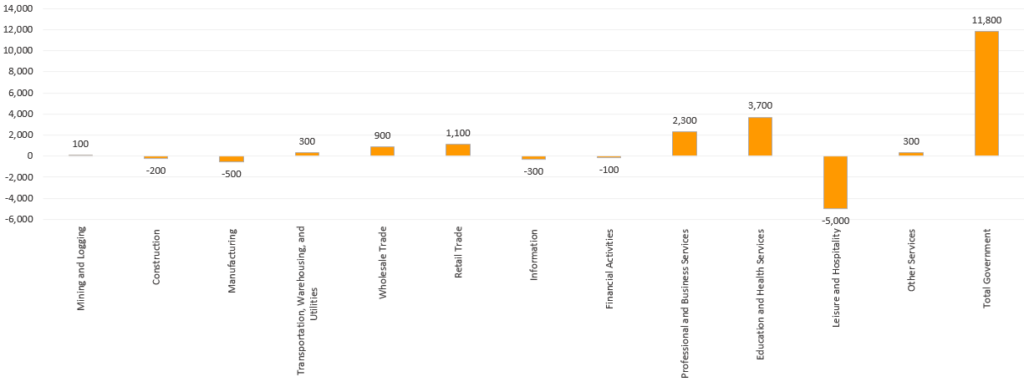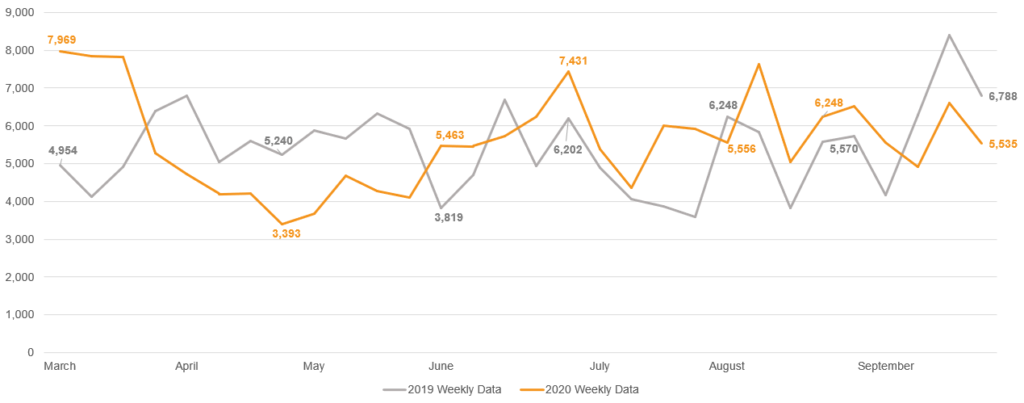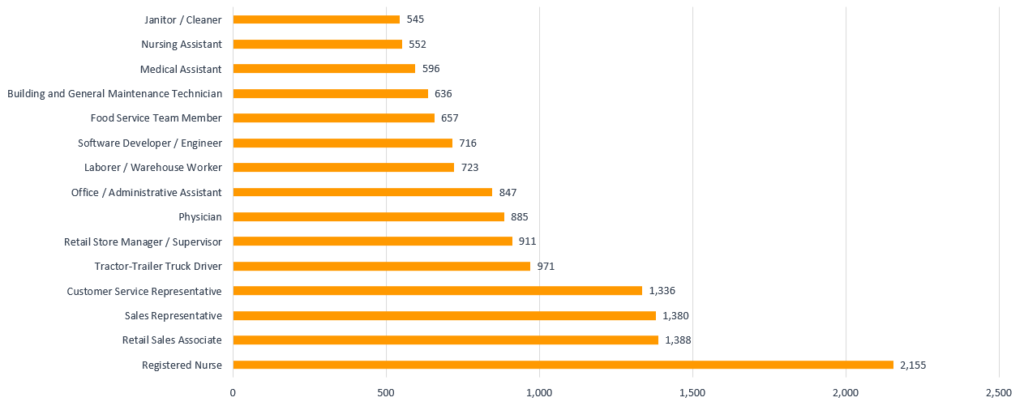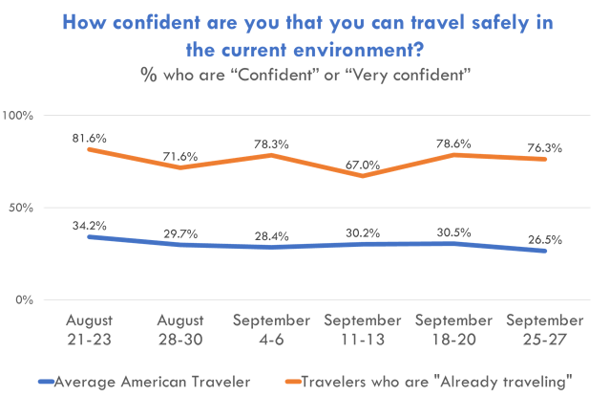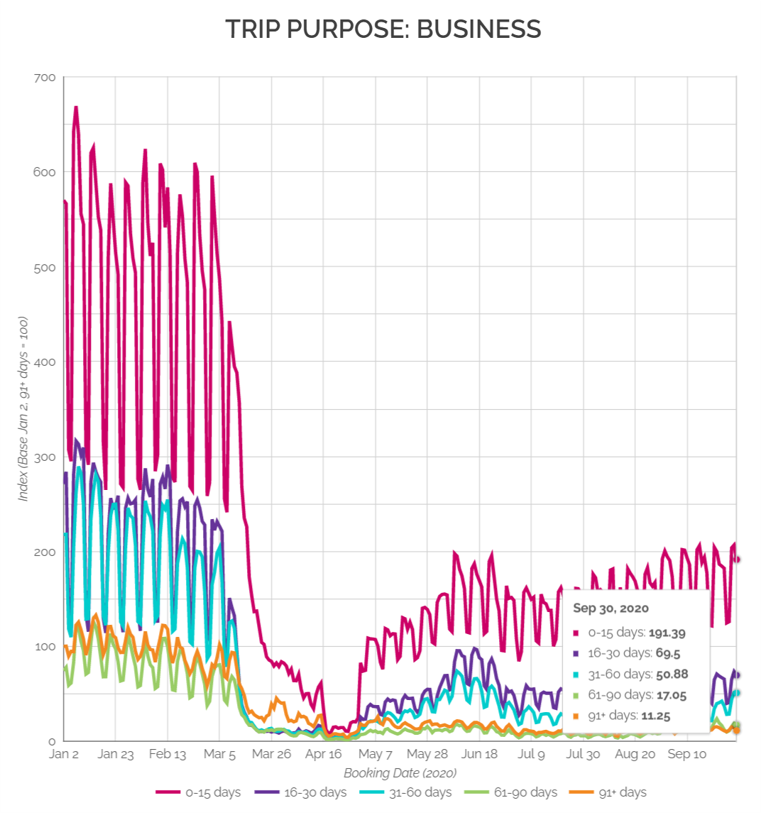Co-authored by José Rivera – Associate Director, Business Development
A weekly update to high-frequency indicators through October 2 that will signal worsening or better economic recovery outcomes for the Orlando region.
In this weekly, special edition of the metro Orlando Market Overview, the Partnership research team analyzes select, high-frequency indicators* that will signal worsening or better outcomes for the region. The signs of a deepening recession or the beginning of a recovery will appear in these indicators before they are seen in a wider set of data sources.
Of note, the National Bureau of Economic Research officially declared the US economy in a recession on Monday, June 8. Starting in February, this recession ends a decade-long period of economic expansion and the longest in recorded US history.
The metrics provided below will be updated in new posts on a weekly basis by the research team with the latest data available.
*Lags in data collection and publishing mean that many economic indicators will not begin to quantify the effects of a COVID-19 recession on the Orlando region until Q3 2020 and beyond.
| Unemployment Rate | New Claims for Unemployment Insurance | Month to Month Job Change | Week to Week Job Postings | |
| Metric | 11.0% | 3,435 | 14,400 | 5,535 |
| Rate of Change | -4.4% MoM | +5.4% WoW | +1.2% MoM -9.0% YoY | -16.2% WoW |
| Date Range | August | September 19 | July-August | September 26 |
| Released | Monthly | Weekly | Monthly | Weekly |
Source: U.S. Dept. of Labor, FL DEO, Burning-Glass
Term Definitions:
- WoW = Week-over-week
- MoM = Month-over-month
- YoY = Year-over-year
Key Takeaways: Week ending October 2, 2020
- Just released national data shows the U.S. unemployment rate fell by half a percentage point to 7.9 percent in September. Among the major worker groups, the unemployment rates declined for adult men (7.4 percent), adult women (7.7 percent), Whites (7.0 percent), and Asians (8.9 percent). The jobless rates for teenagers (15.9 percent), Blacks (12.1 percent), and Hispanics (10.3 percent) showed little change over the month. The nation added 661,000 jobs back to the economy from August to September. Notable job gains occurred in leisure and hospitality, retail trade, health care and social assistance, and professional and business services. For the month of August, the Orlando MSA reported an unemployment rate of 11.0 percent. All four counties in the Orlando MSA reported a decline in their unemployment rate: Seminole (7.2 percent), Lake (8.8 percent), Orange (11.6 percent), and Osceola (15.1 percent) (slide 5). The region added 14,400 jobs back to the economy from July to August, mainly in government work (slide 9).
- New weekly claims for unemployment insurance continue to decrease in Florida while the U.S. reported a plateau (slide 6). The number of U.S. claims is plateauing around the 880,000’s for the fifth consecutive week. In Florida, claims continue to decrease, but at a slower rate. Florida reported 29,360 new weekly claims for unemployment insurance. As of September 19, claims for unemployment insurance in the Orlando MSA have remained between 3,200-3,400’s for the fourth consecutive week. The Orlando MSA reported 3,435 new weekly claims, a slight increase from the previous week. Claims in all four counties: Orange, Osceola, Seminole, and Lake saw a slight increase.
- Job posting data reflects real-time labor market information and business recovery. Slide 10 compares how the Orlando MSA labor market is behaving in contrast to 2019. In the most recent week, job postings saw a decrease of 16.2 percent, following a similar trend to 2019. Slide 11 shows this information broken out by top industries. Posting activity saw a decrease in health care and social assistance, retail trade, and financial and insurance, some of the major contributors to movements in overall posting activity. Employers in hospital and healthcare services, public schools and defense continue to be the major job posters in the region. Note: Job posts do not measure hires and may include companies who continue to post jobs but are on a hiring freeze.
- Responses to the U.S. Census Small Business Pulse Survey indicate that the region’s overall sentiment remains slightly more negative than the national perspective. Although trending more positive since the third week of August, there is a a downtick in the last week of data collection (September 20 – 26).
- Area small businesses experiencing financial stress appear to mirror the national picture. A measure of the overall outlook for recovery, as shown in the Expected Recovery Index (slide 19), reflects the most divergent perspectives between regional (-0.61) and national respondents (-0.55), with Orlando small businesses expected recovery time period closer to six months away.
- A third of area small businesses indicate no plans to adjust their strategies in preparation for recovery. Regional emphasis on access to capital and identifying new hires mirrors the national focus, but there exists a greater emphasis locally on identifying new supply chain options and increasing marketing and sales efforts.
- A quick check on the pulse of the nation’s business travel indicates recovery continues to be an issue of consumer confidence. Business travel with short planning horizons continue to trend up, but nowhere near pre-pandemic volumes. MMGY’s September 2020 Travel Intelligence report indicates that respondents’ likelihood to take a domestic business trip during the next six months also increased, rising from 31 percent last month to 35 percent in the most recent results. Importantly, the percentage of business travelers who said they were not at all likely to take a business trip during the next six months declined significantly from 35 percent to 25 percent this month.
1. Unemployment Rate
2019-2020, NSA
Note: The U.S. unemployment rate for September is 7.9% with the Bureau of Labor Statistics (BLS) suggesting it could be up to 1 point higher due to a misclassification of “absent” workers. The noted, possible rate from the BLS is included on the gray, dashed line. Next Update: Orlando MSA Data – October 20
2019-2020, NSA by County
2. New Claims for Unemployment Insurance
U.S., March 2020 – September 26, 2020
Florida, March 2020 – September 26, 2020
Orlando MSA March 14 – September 19, 2020
Orlando Counties, March 14 – September 19, 2020
3. Month-to-Month Job Change – By Industry
1- Month Change in Employment , July – August 2020 (Not Seasonally Adjusted)
Next Update: September data released October 20
4. Job Postings – Time Series Analysis
Total Online Job Ads, Orlando MSA, 2019 vs 2020
Top 10 Posting Industries: Orlando MSA, by Week Posted
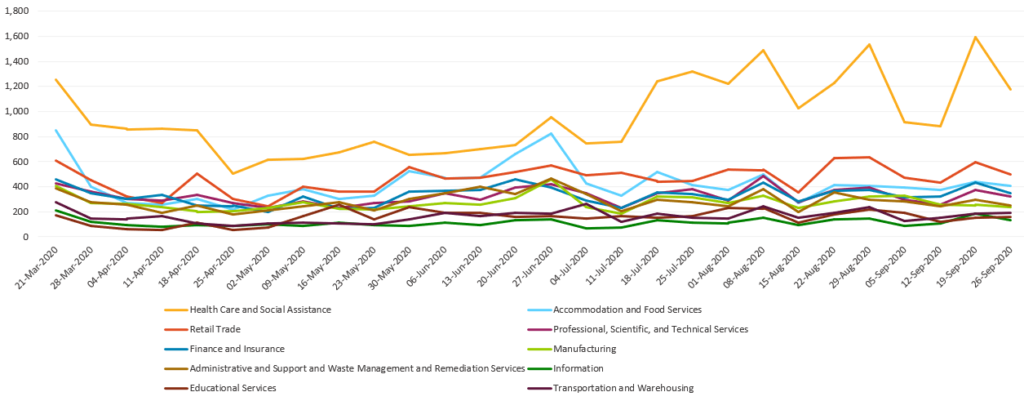
Jobs in Greatest Demand: Orlando MSA, Last 60 Days Ending September 30, 2020
Employers With Most Job Openings: Orlando MSA, Last 60 Days Ending September 30, 2020
5. Local (MSA) Small Business Overall Sentiment
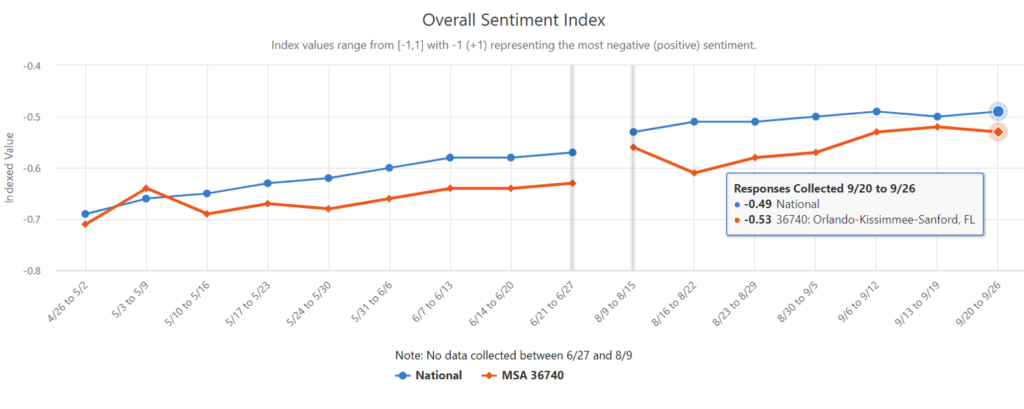
6. Local Small Business Operational Challenges Index
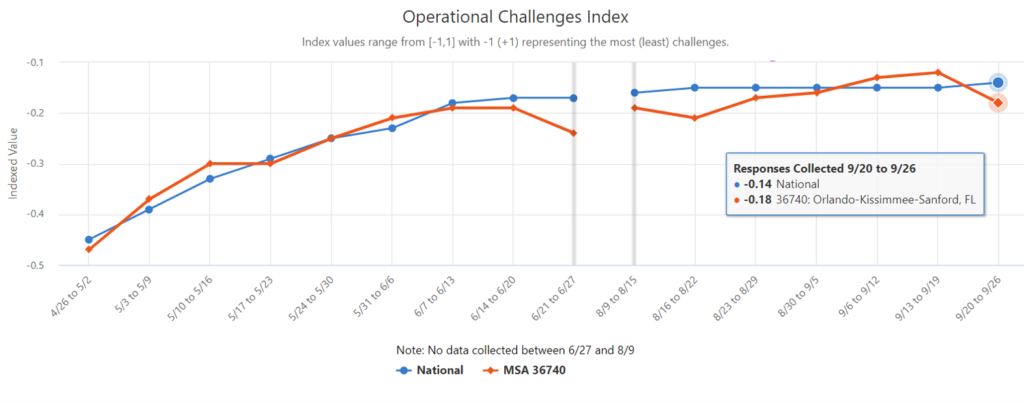
7. Small Business Financial Stress Index
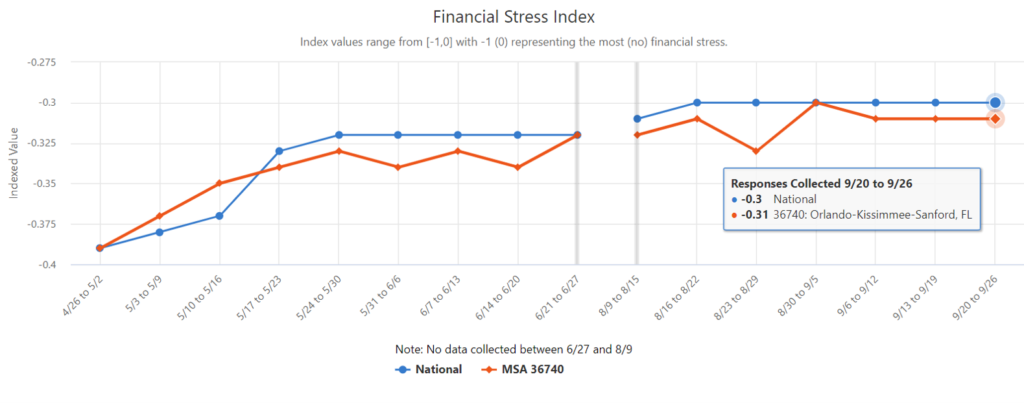
8. Small Business Expected Recovery Index
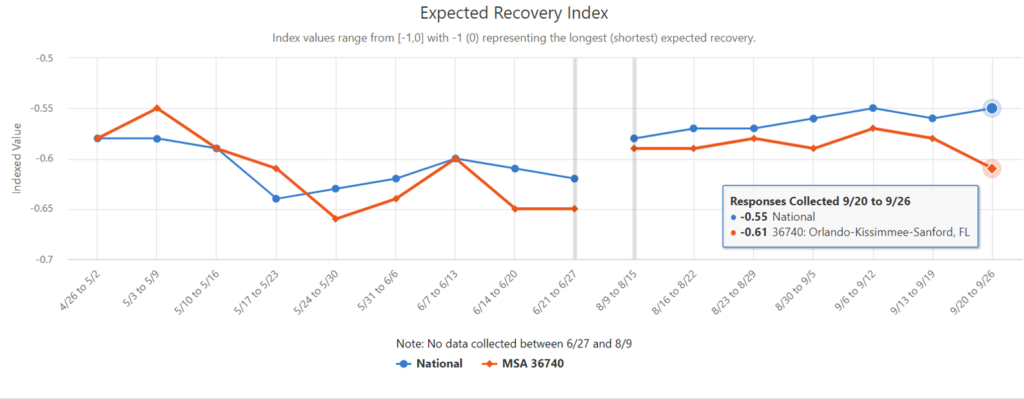
9. Small Business Recovery Strategies
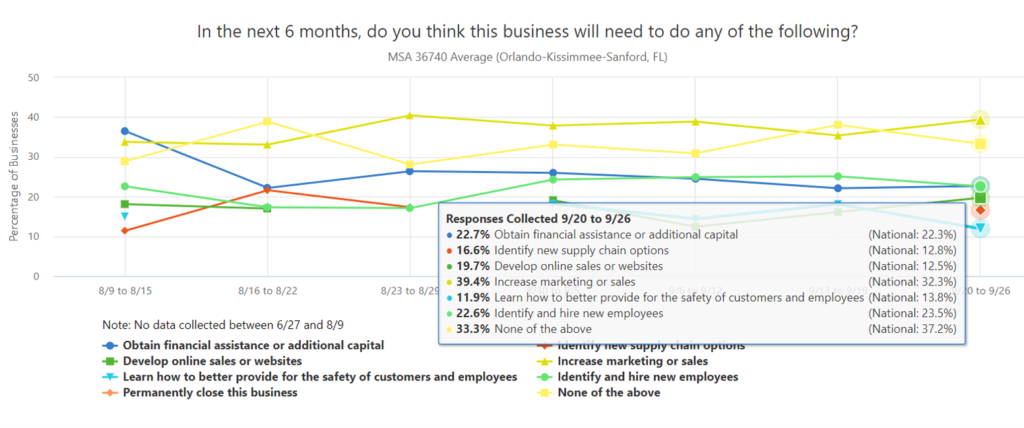
Business Travel Insights
Co-authored by:

José Rivera Associate Director, Business Development
José is the Associate Director of Business Development at the Orlando Economic Partnership, focusing on developing the “Why Orlando” business case, and providing business intelligence and analytics to potential companies relocating or expanding in the Orlando metro. He studied Economics with a focus on Business Analytics at the University of Central Florida.


